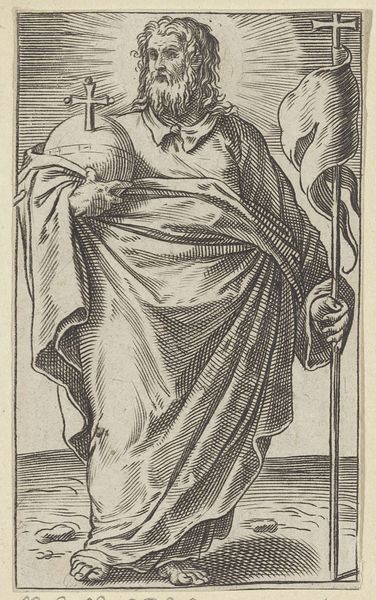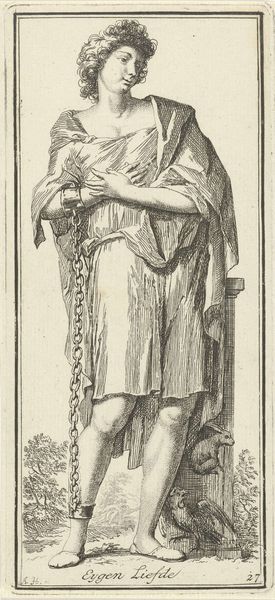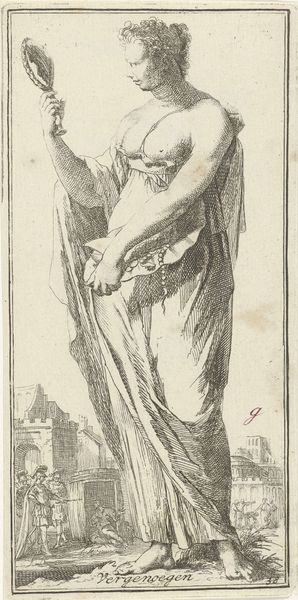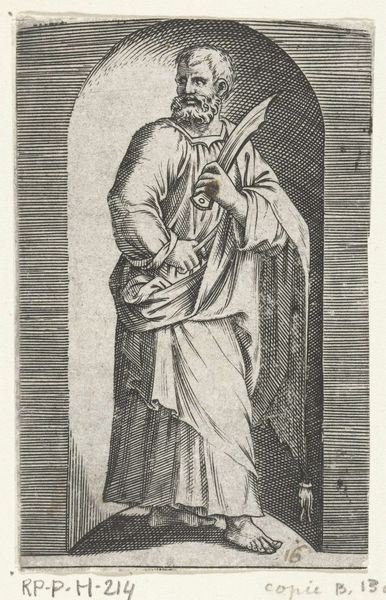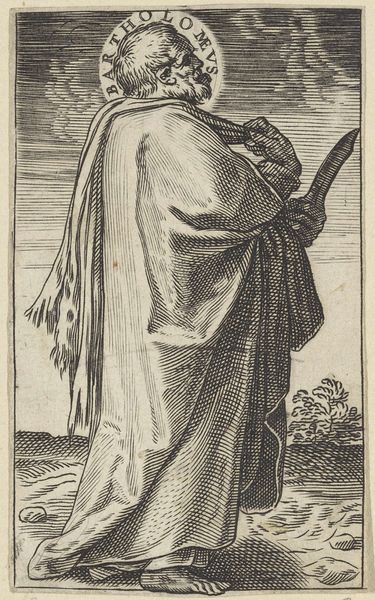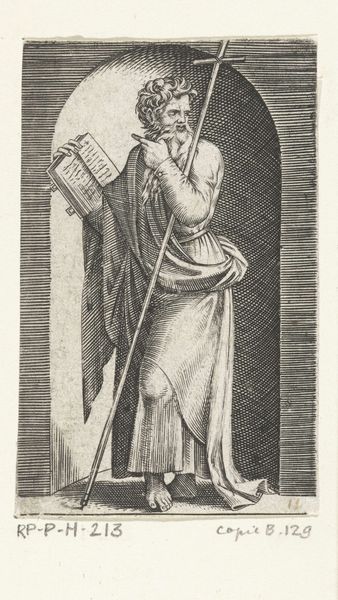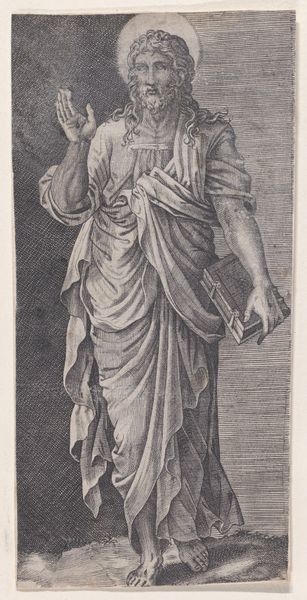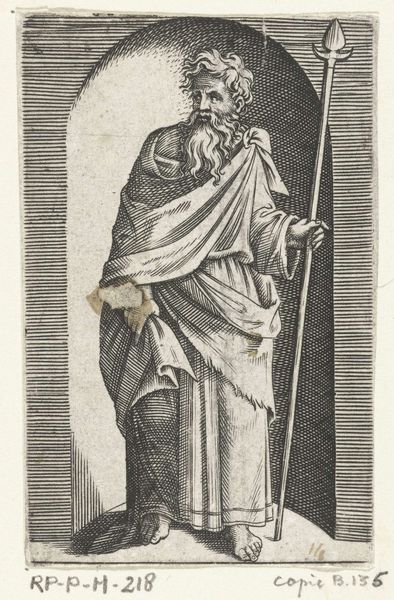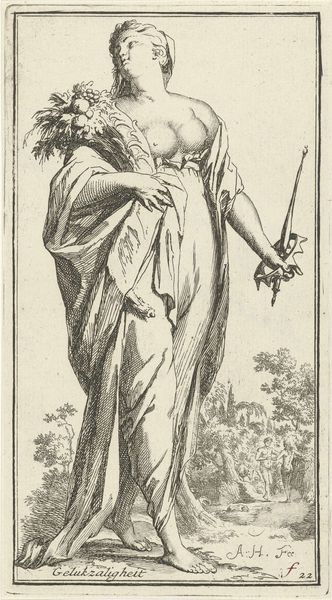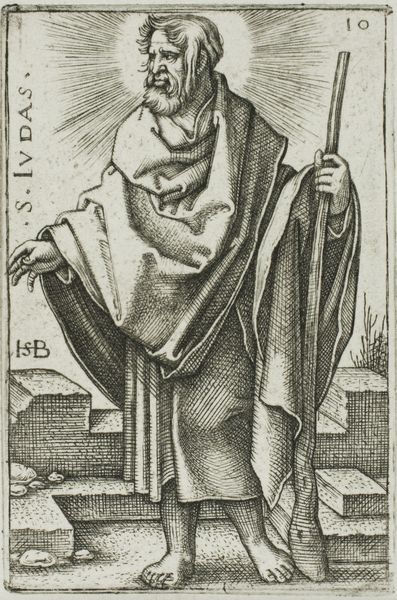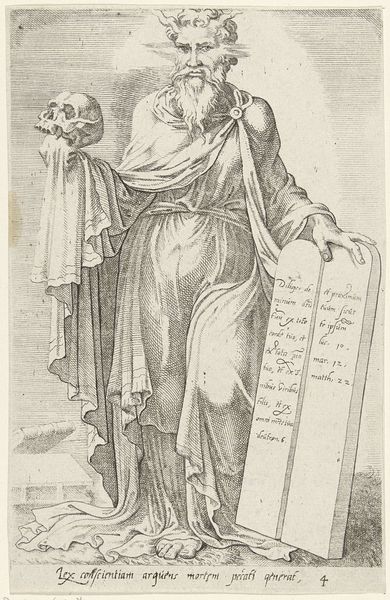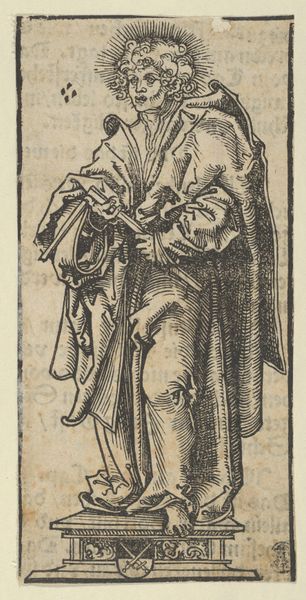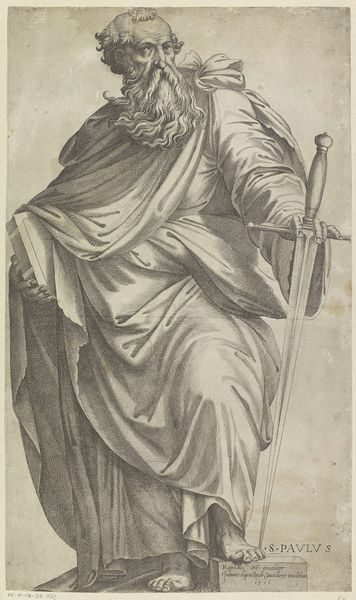
drawing, ink, engraving
#
portrait
#
drawing
#
allegory
#
baroque
#
figuration
#
ink
#
engraving
Dimensions: height 184 mm, width 92 mm
Copyright: Rijks Museum: Open Domain
Curator: The engraving before us, titled "Personificatie van de Voorzichtigheid"—or, "Personification of Prudence"—dates from the 1710s and is by Arnold Houbraken, a Dutch artist of the Baroque era, here in the collection of the Rijksmuseum. Editor: The first thing I see is all this drapery. It’s just cascades of cloth… giving her an air of subdued grandeur. The stark lines of the print only enhance it, that fabric could almost be metal, so fixed does it feel! Curator: Ah, yes. Prudence is often depicted cloaked, symbolizing concealment or circumspection. What about the other elements? Notice what she holds. Editor: Well, in one hand, she’s got a head! And the other… what looks like a T-square? It's such a curious juxtaposition, destruction and calculation at once. Curator: Quite! The head she's gazing upon is likely that of a serpent— a common symbol representing cunning or temptation that must be overcome. That’s held by snakes and crowned by laurel, showing she’s dominated earthly desires. And the T-square does symbolize careful measure. It underscores her ability to judge situations accurately. Editor: It all sounds very sensible. The process is all so neat though, literally—etched lines on paper. Was this sort of printmaking widely accessible then, and how did the materials impact that availability? Curator: Engravings allowed for reproduction on a moderate scale. So, it was intended for an audience who wanted accessible art… but was still largely limited to the more educated merchant classes of Dutch society. There were more print workshops emerging and distributing these relatively cost-efficient moral messages at that time, so in context its more accessible than some grand canvas, that's for sure! Editor: I guess so. It’s strange to see “wisdom” marketed like a brand of soap though. Curator: Fair enough! I like to think this "prudence" reflects an inner state—calm, reasoned, even…well…lovely! Editor: While I'm more intrigued by what this represents as an industrially-made artefact during a period of emerging mercantilism; it’s definitely a snapshot into a fascinating time in the early history of capitalism. Thanks for the perspective, it’s a helpful angle.
Comments
No comments
Be the first to comment and join the conversation on the ultimate creative platform.
